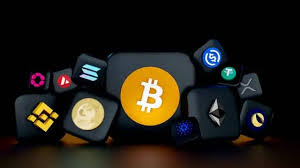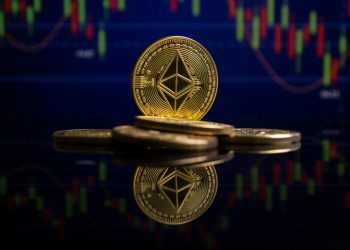In-Depth Report on Tokenized Gold: Reshaping the On-Chain Paradigm for Safe-Haven Assets
04/17 06:11
I. Introduction: Renewed Demand for Safe-Haven Assets in the New Cycle
Since the beginning of 2025, frequent geopolitical conflicts, persistent inflationary pressures, and sluggish growth across major economies have reignited demand for safe-haven assets. As a traditional "safe asset", gold is once again in the spotlight, repeatedly breaking price records and surging past $3,000 per ounce. It has become a prime sanctuary for global capital. At the same time, as the integration of blockchain technology with traditional assets accelerates, "tokenized gold" is emerging as the next hotspot of financial innovation. It not only retains gold's value-preserving function but also possesses liquidity, composability, and smart contract interoperability of on-chain assets. As a result, a growing number of investors, institutions, and even sovereign wealth funds are beginning to include tokenized gold in their asset portfolios.
II. Gold: Still the Irreplaceable "Hard Currency" in the Digital Era
Humans have entered a highly digitized financial era, and various financial instruments have proliferated, from fiat currencies, government bonds, and stocks to recent cryptocurrencies. Even so, gold has retained its ground as the ultimate store of value due to its profound historical significance, enduring stability, and its role as a supranational form of money. Gold is known as a "hard currency" not just because it is naturally scarce and physically tamper-proof but also because it is backed by a collective consensus forged in human society over thousands of years rather than the credit of any single country or organization. In macroeconomic cycles where any sovereign currencies may depreciate, fiat systems may collapse, and global credit risks mount, gold is consistently seen as the final line of defense, a last-resort medium of payments in times of systemic risks.
Over the past decades, especially after the collapse of the Bretton Woods system, gold was once sidelined, with the U.S. dollar and other sovereign currencies taking over its role in direct settlements. However, it turns out that credit currencies are not immune to cyclical crises. Gold has never truly lost its place; instead, it has regained its role as a reliable value anchor in every round of monetary crisis. Whether it was the 2008 global financial crisis, the period of monetary easing following the 2020 pandemic, or the high inflation and rate hikes since 2022, each event has fueled dramatic upswings in the price of gold. Particularly since 2023, a confluence of factors, including escalating geopolitical frictions, the threat of U.S. debt default, and persistent global inflation, have again pushed gold past the critical $3,000/oz threshold and triggered a new round of shift in global asset allocation strategies.
Central banks' behavior has been the clearest indication of this trend. As shown by data from the World Gold Council, global central banks have steadily increased their gold reserves over the past five years, with non-Western countries such as China, Russia, India, and Turkey leading the charge. In 2023, net gold purchases by global central banks exceeded 1,100 tons, setting a new historical record. This wave of gold accumulation is not merely a short-term tactical move but a strategic response driven by deep concerns over asset security, the multi-polarization of sovereign currencies, and the waning stability of the dollar-based system. Against the backdrop of the ongoing reshaping of global trade and geopolitical landscapes, gold is once again recognized as the most trusted form of reserve asset. From the perspective of monetary sovereignty, gold is replacing the U.S. Treasury bonds as a key anchor in the restructuring of foreign exchange reserves for many central banks.
More structurally significant, gold's role as a safe-haven asset is regaining recognition in global capital markets. Unlike credit-based assets such as U.S. Treasury bonds, gold does not depend on the issuer's repayment ability and carries no risk of default or restructuring. Therefore, gold's "counterparty-free" attribute stands out in an era marked by ballooning global debt and widening fiscal deficits. Currently, most major economies in the world have debt-to-GDP ratios exceeding 100%, with the U.S. climbing above 120%. As doubts grow over fiscal sustainability, gold gains irreplaceable appeal in an age of weakening sovereign credit. In practical operations, major institutions, including sovereign wealth funds, pension funds, and commercial banks, are all increasing their allocations to gold to hedge against systemic risks in the global economy. This shift is redefining gold's traditional counter-cyclical and defensive role and positioning it instead as a structurally neutral, long-term asset.
Of course, gold is not a perfect financial asset. Its inherent limitations, such as low transaction efficiency, difficulty in physical transfer, and lack of programmability, make it feel "heavy" in the digital age. However, this does not mean gold would be phased out. On the contrary, these limitations are prompting gold to undergo a new round of digital transformation. We have observed that gold's evolution in the digital world is no longer about being a static store of value but about actively integrating fintech logic in the direction of tokenized gold. This shift no longer pits gold against cryptocurrencies. Instead, it represents a convergence of value-anchor assets with programmable financial protocols. The tokenization of gold brings with it liquidity, composability, and cross-border mobility, enabling gold to serve not only as a vehicle for preserving wealth in the physical world but also as an anchor that stabilizes assets in the digital financial system.
It is especially worth noting that gold, as a store of value, is in a complementary rather than substitutional relationship with Bitcoin, which is often dubbed as "digital gold". Bitcoin is far more volatile than gold, with inadequate short-term price stability. Meanwhile, in times of heightened macroeconomic uncertainty, Bitcoin is more likely to be perceived as a risk asset than a safe-haven asset. In contrast, gold still has counter-cyclical, low volatility, and high recognition advantages due to its vast physical market, a mature system of financial derivatives, and widespread acceptance by central banks. From an asset allocation standpoint, gold remains one of the most essential hedging instruments in global investment portfolios, with a foundational "financially neutral" position that is hard to replace.
Overall, gold's status as a hard currency has not been diminished by the rise of digital assets, whether viewed through the lens of micro-financial security and the reconfiguration of the monetary system or through the angle of the reconfiguration of global capital allocation. On the contrary, it has gained renewed importance in light of global trends such as de-dollarization, geopolitical fragmentation, and sovereign credit crises. In the digital age, gold is both a central pillar in the traditional financial world and a potential value anchor for future on-chain financial infrastructure. Gold will not be replaced in the future. Instead, it will carry forward its historical mission as the "ultimate credit asset" in both emerging and traditional financial systems through tokenization and programmability.
III. Tokenized Gold: Representation of On-chain Assets as Gold
Tokenized gold is essentially a technological and financial practice that maps physical gold onto blockchain networks in the form of crypto assets. Through smart contracts, it maps the ownership or value of physical gold as on-chain tokens, liberating gold from vaults, warehouse receipts, and static entries in bank systems. This enables gold to circulate and integrate freely on-chain in a standardized and programmable manner. Tokenized gold is not the creation of a novel financial asset but a form of reconstruction that embeds a traditional commodity digitally into the new financial system. It weaves gold, a hard currency that has stood the test of historical cycles, into the "disintermediated financial operating system" represented by blockchain, giving rise to an entirely new structure for carrying value.
From a macro perspective, this innovation can be understood as a key part of the global wave of asset digitalization. The universal adoption of smart contract platforms like Ethereum has provided the underlying programmable foundation for the on-chain representation of gold. Meanwhile, the development of stablecoins in recent years has validated both the market demand and technical feasibility for "on-chain value-anchor assets". In a sense, tokenized gold is an extension and elevation of the stablecoin concept. It not only pursues price anchoring but is also backed by a real, hard asset without credit default risk. Unlike fiat-backed stablecoins, gold-backed tokens are inherently free from the volatility and regulatory risk associated with any single sovereign currency, thus capable of remaining neutral cross-border and resisting inflation over the long run. These features are especially important now as the dollar-dominated stablecoin landscape raises increasing regulatory and geopolitical concerns.
In terms of the micro mechanism, tokenized gold is typically generated through two main paths: one is a custodial model based on "100% physical collateral + on-chain issuance", and the other is a protocol-based model using "programmable mapping + verifiable asset certificates". The former is adopted in projects like Tether Gold (XAUT) and PAX Gold (PAXG), which are backed by custodians holding physical gold, ensuring each token corresponds to a specific amount of physical gold, with regular audits and off-chain reporting. The latter, seen in projects like Cache Gold and Digital Gold Token, attempts to bind programmable asset certificates to specific batches of gold to enhance the verifiability and liquidity of the tokens. Whichever the path, the core objective is to establish a mechanism for the credible on-chain representation, flow, and settlement of gold, thus making physical gold assets instantly transferable, divisible, and composable, and addressing the traditional gold market's long-standing problems of fragmentation, high entry barriers, and low liquidity.
The greatest value of tokenized gold lies not just in its advancement in technological representation but in its fundamental transformation of the gold market's functionality. In traditional markets, the trading of physical gold comes with steep costs for transport, insurance, and storage, while paper gold and ETFs lack true ownership and on-chain composability. By contrast, tokenized gold offers a new form of gold as a native on-chain asset, which is divisible, instantly settled, and able to flow cross-border. This turns gold from a "static asset" into a dynamic financial instrument that is highly liquid and transparent. This feature dramatically expands gold's use cases in DeFi and global financial markets, enabling it to not only function as a store of value but also take part in multi-level financial activities such as collateralized lending, margin trading, yield farming, and even cross-border settlement.
Furthermore, tokenized gold is also driving the gold market to shift from relying on centralized infrastructure to decentralized infrastructure. In the past, the transfer of the value of gold depended heavily on traditional centralized nodes like the London Bullion Market Association (LBMA), clearing banks, and vault custodians. As a result, this process is plagued by issues such as information asymmetry, cross-border delays, and soaring costs. In contrast, with on-chain smart contracts as carriers, tokenized gold has established a system for the issuance and circulation of gold assets that requires no permissions or trusted intermediaries. This increases the transparency and efficiency of processes like ownership confirmation, settlement, and custody of traditional gold, considerably lowers the barriers to market entry, and allows retail users and developers alike to access the global gold liquidity network equally.
All in all, tokenized gold represents a profound value restructuring and systemic integration of traditional physical assets into the blockchain world. It inherits gold's roles as a safe haven and store of value while pushing the boundaries of what gold can do as a digital asset in the new financial system. Against the backdrop of global financial digitalization and a move toward a multi-polar monetary system, the tokenization of gold is not a short-lived experiment but a long-term process aligned with the evolution of financial sovereignty and technological paradigms. Whoever succeeds in developing a tokenized gold standard that combines compliance, liquidity, composability, and cross-border utility in this process will likely have a say in the future "on-chain hard currency".
IV. Analysis and Comparison of Mainstream Tokenized Gold Projects
In today's crypto financial ecosystem, tokenized gold has become a bridge linking the traditional precious metals market with the emerging system of on-chain assets. A number of representative projects have emerged. These projects explore various dimensions such as technical architecture, custodial mechanisms, compliance paths, and user experience, gradually developing a prototype for what an "on-chain gold" market might look like. While all of these projects essentially follow the same basic principle of "physical gold collateralization + on-chain mapping", their specific implementation pathways and areas of focus differ, reflecting the fact that the tokenized gold sector is still competitive and without a unified standard.
The most notable tokenized gold projects currently include Tether Gold (XAUT), PAX Gold (PAXG), Cache Gold (CGT), Perth Mint Gold Token (PMGT), and Aurus Gold (AWG). Among them, Tether Gold and PAX Gold stand out as the two top players in the industry. They lead other projects in terms of market capitalization and liquidity. Moreover, their mature custodial frameworks, high transparency, and strong brand reputation have earned them higher levels of user trust and exchange support.
Tether Gold (XAUT) is issued by the stablecoin giant Tether. Its key feature is a 1:1 peg with London Good Delivery gold bars, with each XAUT representing one troy ounce of physical gold stored in Swiss vaults. Backed by the Bitfinex ecosystem behind Tether, this project enjoys a first-mover advantage in liquidity, trading channels, and stability. However, Tether Gold is relatively conservative regarding disclosure and transparency. Users cannot directly verify specific gold bar serial numbers associated with each token on-chain. Such a "black box" asset custodial model has sparked criticism within the crypto community that demands a higher level of decentralization. In addition, XAUT's compliance framework is primarily oriented toward international offshore users. Therefore, the barrier to entry remains high for investors who wish to invest in tokenized gold through regulated financial channels.
Comparatively, PAX Gold (PAXG), launched by the licensed U.S. fintech company Paxos, has offered greater compliance and asset transparency. Each PAXG token also represents one troy ounce of London Good Delivery gold. However, PAXG allows users to trace information corresponding to their assets on-chain by providing them with verifiable goal bar serial numbers and custodial data. Even more importantly, as a trust company regulated by the New York State Department of Financial Services (NYDFS), Paxos's custodial and issuance mechanisms for gold assets are subject to regulatory reviews, which enhances PAXG's compliance credentials. Moreover, the project has been actively improving DeFi compliance and is now compatible with multiple protocols like Aave and Uniswap. This allows PAXG to be used as collateral for lending and liquidity mining, thereby unlocking the compound utility of gold assets on-chain.
Cache Gold (CGT) represents a different attempt at tokenized gold that emphasizes decentralization and verifiable asset certificates. This project adopts a system of “Token Wrapper + registration of gold bar numbers”, with each CGT token corresponding to one gram of physical gold and tied to a specific batch number in independent custodial vaults. Its standout feature is the strong binding mechanism between on-chain and off-chain assets. In other words, each deposit of gold must generate a corresponding Proof of Reserve, with the batch information and movement data recorded on the blockchain. This mechanism allows users to track the physical assets behind the tokens in a more transparent manner. However, it also introduces challenges in custody efficiency and liquidity organization, which has hindered its adoption across mainstream DeFi scenarios.
Perth Mint Gold Token (PMGT) is an official tokenized gold product issued by Perth Mint, Australia's state-owned precious metals refiner. The gold assets backing this project are guaranteed by the Australian government and stored in a national-level vault, making PMGT theoretically one of the most creditworthy tokenized gold projects. However, due to its limited participation in the crypto market, scarce trading pairs, and poor DeFi compatibility, the project lags far behind Tether Gold and PAX Gold in terms of market liquidity and user adoption, despite its robust security and official backing.
Other innovative projects, such as Aurus Gold (AWG) and Meld Gold, are experimenting with new paradigms for tokenized gold through approaches like diversified custodians, NFT wrappers, and cross-chain issuance. For instance, Aurus Gold is jointly issued by multiple mints and integrates with various exchanges and wallets to reduce tokenized gold's reliance on centralized entities. It also introduces NFTs as wrapping certificates for gold, adding flexibility to asset management. These projects align more closely with the native asset system of Web3, but they are still in their infancy and have yet to establish broad market consensus.
Overall, the current tokenized gold market is shaped by a clear polarization: On the one hand, decentralized and high-trust projects like Tether Gold and PAX Gold have quickly captured mainstream market share thanks to backing from major institutions, mature custodial structures, and advantageous exchange access. On the other hand, decentralized and verifiable projects, represented by Cache Gold and Aurus Gold, emphasize asset transparency and on-chain autonomy, but they face practical limitations in market acceptance, custody coordination efficiency, and DeFi integration. The competition between these two camps highlights the ongoing tug-of-war between "trust thresholds" and "technological ideals" throughout the crypto financial ecosystem.
As indicated by the industrial evolution trend, tokenized gold standards are likely to converge around four key dimensions, namely, compliance, verifiability, composability, and cross-chain interoperability. On the one hand, only assets backed by transparent custodial systems, subject to audits, and verifiable on-chain within a strong regulatory environment will earn lasting trust from mainstream institutions and users. On the other hand, projects must also truly integrate with DeFi and Web3 infrastructure and turn gold tokens into native on-chain assets. Otherwise, they are no more than "digital gold certificates under a financial wrapper", unable to generate meaningful utility or network effects.
V. Tokenized Gold from the Investor's Perspective: Value, Opportunity, and Risk
As an emerging financial instrument that combines the traditional role of gold as a value anchor with the characteristics of on-chain assets, tokenized gold is gradually becoming an alternative asset option for investors' portfolios. Unlike traditional gold ETFs or physical gold bars, its core value lies not only in gold's role as a safe haven but also in the enhanced liquidity, improved convenience of trading, and expanded composability enabled by blockchain-based asset digitalization. From an investor's standpoint, tokenized gold is appealing because it strikes a balance between acting as an "anchor of financial stability" and "capturing the dividends of technological innovation", offering a practical pathway to hold "on-chain hard currency" in the highly volatile crypto market.
First of all, tokenized gold naturally inherits the fundamental investment logic of gold as a global safe-haven asset. Experiences show that during periods of heightened macroeconomic uncertainty, rising inflation, or escalating geopolitical tensions, gold tends to attract a risk premium in capital markets, making it a preferred asset for both institutional and individual investors to hedge against fiat depreciation and market turbulence. Tokenized gold carries forward this role. In particular, during episodes of extreme volatility in crypto markets, it provides investors with a low- or even negatively correlated asset allocation option. During multiple downturns in the crypto market in 2022 and 2023, tokens such as PAXG and XAUT experienced significantly smaller price fluctuations than mainstream crypto assets, at times even serving as short-term "on-chain safe havens" for capital seeking refuge.
Secondly, tokenized gold brings unprecedented liquidity and accessibility to gold assets. Traditional gold investment has long faced barriers such as high trading thresholds, limited trading windows, cumbersome storage and retrieval, and strong geographic constraints. By contrast, as an ERC-20 or cross-chain asset, tokenized gold can be instantly transferred via any wallet that supports public blockchains worldwide. In addition, it also supports various advanced financial operations such as high-frequency trading, DeFi staking, and cross-border settlement. This leap in liquidity significantly expands the utility of gold, transforming it from a static "store of asset" into a "base asset for on-chain cash flow" that can be dynamically managed.
More importantly, as DeFi and Web3 infrastructure gradually matures, tokenized gold is gaining the composability typical of financial products, shifting from merely "digital gold" to a module of native on-chain assets. Investors can collateralize PAXG to mint stablecoins and unlock liquidity for other investment opportunities. They can add gold assets to liquidity pools to earn yield. They can even transfer tokenized gold across chains in interoperability protocols to facilitate global payments and settlements. This concept of "asset as protocol" represents a path of innovation impossible to achieve through the traditional gold financial system.
However, despite its many advantages, tokenized gold still faces structural risks and developmental bottlenecks that investors must take into full account. The first is custody and redemption risk. Most tokenized gold projects still rely on centralized physical custody systems. Therefore, investors must trust that issuers can securely hold the gold over the long term and fulfill physical redemption when needed. However, most projects have redemption processes that are cumbersome and geographically constrained, with high thresholds. Especially under extreme market conditions, whether users can successfully redeem on-chain assets for physical gold remains subject to legal and operational uncertainties. In addition, some projects lack adequate disclosure regarding custody audits and asset verification, which erodes user confidence and hinders the long-term establishment of tokenized gold as an "on-chain safe-haven asset".
The second issue is external compliance and regulatory risk. As a high-value, sensitive asset, gold's tokenization process must address multi-faceted requirements, including those related to precious metals markets, securities laws, and KYC/AML compliance. The legitimacy and regulatory pathways of tokenized gold vary widely across jurisdictions, which means projects face highly uncertain legal risks. Especially for institutional users seeking to use this asset for cross-border settlements or large transactions, the ability to operate securely within a compliant framework is a key factor in determining its acceptance.
Finally, from the perspective of market games, tokenized gold still plays a complementary role in actual investment portfolios and struggles to become a dominant asset. While its safe-haven and stability properties are valuable during downturns, it tends to generate lower yields than higher-risk crypto assets like Bitcoin and Ethereum during bull markets. This characteristic of "stable value with limited upside" makes tokenized gold more suitable as a tool for hedging volatility and stabilizing portfolio returns, rather than as a core asset for high-growth investments.
Overall, for investors, tokenized gold is both a new form of "store-of-value asset" and an allocation option that prioritizes security in the digital economy. Its intrinsic logic builds upon gold's stable value over thousands of years, with blockchain technology reshaping its tradability, custodianship, and composability. As the DeFi ecosystem evolves, cross-chain infrastructure improves, and regulatory pathways become clearer, tokenized gold is poised to play an increasingly vital role in the "full lifecycle management of digital assets". For individual users, it functions as a practical way to enhance portfolio risk resistance and pursue counter-cyclical strategies. Meanwhile, for institutions, it may become a "base asset" in on-chain portfolios, thereby opening the door to a new era of true "on-chain asset management".
VI. Conclusion: Gold's On-Chain Evolution Is Not a Replacement but a Continuation
In an age marked by unstable credit, rising volatility in the U.S. dollar, and a reshaping of the global monetary landscape, gold is in the midst of a "digital rediscovery" process. It is not being replaced by Bitcoin or other digital assets but rather being tokenized, made programmable, and integrated with smart contracts. In this way, it can participate more flexibly in the development of a new financial system. For users, this evolved form of gold remains a "hard currency", only now in an on-chain form. It continues to offer security, value preservation, and risk resistance, serving as a true "anchor of stability" in the digital world.




Semua Komentar0TerkiniHangat
Tidak ada catatan